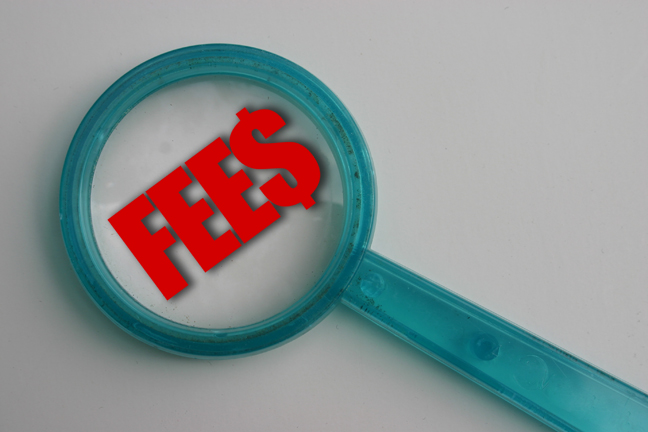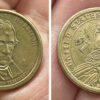Airlines earned almost $4.2 billion in baggage fees last year, according to this report of financial data from the Bureau of Transportation Statistics of the Department of Transportation of the United States pertaining to reports from 25 airlines in 2016 — that is a record high — but the net income of airlines has decreased by $11.25 billion from 2015 to 2016, which represents a drop of greater than 45.38 percent.
Airlines Earned Almost $4.2 Billion in Baggage Fees — But…
The following chart is the annual United States scheduled service passenger airlines financial reports from 2012 through 2016, with all figures in millions of dollars:
| 2012 | 2013 | 2014 | 2015 | 2016 | Dollar Change 2015-2016 |
|
|---|---|---|---|---|---|---|
| Net Income | 74.8 | 12,161.4 | 7,446.5 | 24,787.7 | 13,538.2 | -11,250 |
| Operating Profit/Loss | 5,995.2 | 11,303.5 | 14,600.0 | 27,986.5 | 24,826.4 | -3,160 |
| Operating Revenue | 156,499.8 | 161,625.1 | 169,276.5 | 169,056.9 | 168,165.7 | -891 |
| Fares | 116,869.1 | 121,361.3 | 127,455.4 | 127,060.9 | 125,244.9 | -1,816 |
| Baggage Fees | 3,449.7 | 3,362.0 | 3,558.4 | 3,813.5 | 4,185.8 | 372 |
| Reservation Change Fees | 2,538.2 | 2,814.1 | 2,939.9 | 3,011.8 | 2,895.9 | -116 |
| Operating Expenses | 150,504.6 | 150,321.6 | 154,676.6 | 141,070.4 | 143,339.3 | 2,269 |
| Fuel | 44,885.5 | 42,636.6 | 43,431.2 | 26,979.1 | 22,366.6 | -4,613 |
| Labor | 37,179.0 | 38,050.0 | 40,760.0 | 45,487.0 | 49,712.7 | 4,226 |
Source: Bureau of Transportation Statistics, Form 41; Schedules P1.2 and P6
Interestingly, not all ancillary fees have increased over the previous year. Reservation change fees have decreased by $116 million, representing a drop of almost 3.85 percent and suggesting that passengers are not changing their itineraries on restricted tickets as much in 2016 as in 2015. That — along with an increase in labor rates — contributed to the aforementioned decrease in net income.
Baggage fees and reservation change fees are the only ancillary fees paid by passengers that are reported to the Bureau of Transportation Statistics as separate items. Other fees — such as revenue from seating assignments and on-board sales of food, beverages, pillows, blankets, and entertainment — are combined in different categories and cannot be identified separately.
$67.4 Billion in Ancillary Revenue Projected For Airlines in 2016
Ancillary revenue projected for airlines worldwide is expected to reach $67.4 billion in 2016 — which represents an increase of slightly greater than 13.85 percent over the estimated $59.2 billion in 2015 — which would normally continue a trend of increased revenue which has occurred every year since 2010, according to this report conducted by IdeaWorksCompany and CarTrawler…
…but for the first time in at least seven years, instead of continuing that trend, revenue for airlines is projected to decrease by approximately $13 billion from the previous year.
Fees which are generated by activities and services implemented by airlines beyond the core purpose of the transportation of customers from one point to another is what yields ancillary revenue. This wide range of activities and services — which purportedly provides more options for consumers while simultaneously more profit for airlines — includes but is not limited to:
- Commissions gained from the bookings of external products and services such as hotel and rental car reservations
- The sale of frequent flier loyalty program miles to partners
- The offering of benefits and perks — such as upgrades and airport lounge access — for a fee
- The provision of a la carte services — such as fees for checked luggage, expedited access in boarding an airplane, and payment options for access to in-flight entertainment
Ancillary Revenue Has Steadily Increased Overall…
The billions of dollars earned by airlines worldwide through ancillary revenue has just about tripled.
Worldwide Estimates of Ancillary Revenue |
||||||
2016 Estimate$67.4 billion — 9.1 percent of global revenue of $740 billion |
2015 Estimate$59.2 billion — 7.8 percent of global revenue of $763 billion |
2014 Estimate$49.9 billion — 6.7 percent of global revenue of $746 billion |
2013 Estimate$42.6 billion — 6 percent of global revenue of $708 billion |
2012 Estimate$36.1 billion — 5.4 percent of global revenue of $667 billion |
2011 Estimate$32.5 billion — 5.6 percent of global revenue of $577 billion |
2010 Estimate$22.6 billion — 4.8 percent of global revenue of $474 billion |
Source: Ancillary revenue statistics applied by IdeaWorksCompany to annual airline revenue results.
The estimate for 2012 matches what I reported back on Tuesday, October 30, 2012, where airlines around the world would supposedly collect approximately $36.1 billion in revenue from charging ancillary fees such as for checked baggage and premium seats — $12.4 billion of that to the legacy airlines based in the United States, which amounts to 35 percent of the total amount for airlines worldwide — according to the Amadeus Worldwide Estimate of Ancillary Revenues. Approximately half that amount was from collecting revenue as a result of ancillary fees; while the remainder was from the sale of frequent flier loyalty program miles to corporate partners such as credit card companies.
…But Customers are Starting to Fight Back
The United States Court of Appeals for the Ninth Circuit issued a ruling yesterday that a customer was entitled to sue for a refund of the fee of $15.00 paid to US Airways — which has since merged with American Airlines — for a checked bag which was not delivered on the same day as promised.
Having services such as checked bags included in the price of an airline ticket may be one thing — but if an airline intends to charge extra for a service, it had better deliver on that promise, as the expectation of the customer typically increases with the conspicuous charging of an ancillary fee specifically for that service.
The topic of whether or not ancillary fees have increased the entitlement attitudes of customers was first discussed in this article which I wrote back on Wednesday, April 15, 2015 — and this ruling may indicate that that is indeed the case. If you pay extra for a service and do not receive that service to your satisfaction, you should be paid by the airline in recompense — at least in the form of the ancillary fee for which you paid.
Summary
I have no problem with the airlines earning money from ancillary fees — as long as the passengers are not surprised with them before leaving their home or business to catch their flights, and as long as the fees are not unreasonable. In fact, I encourage airlines to be creative about charging fees on items and services which previously did not exist, such as premium meal service for passengers in the economy class cabin or a baggage delivery service.
However, I am against ancillary fees charged for ridiculous items — such as for carry-on baggage. Give me a break. I also do not like when airlines — or any company, for that matter — are purposely opaque about what fees are charged, when and to whom.
It is also tough to swallow fees for items and services which used to be included in the airfare years ago — such as full meals on many domestic flights and checked baggage. Then again, the airlines were losing a lot of money year after year during those days, and those fees are rather easy to avoid — especially if you are a frequent flier.
One curious exception are that headsets — those acoustically-challenged air tubes with the padding which you stuffed into your ears — used to cost five dollars to use while aboard the airplane. You were required to return them after the flight concluded — not that I can think of any reason why someone would want to abscond with them, as they could not be used with any other device. These days, you can procure headphones for a couple of dollars — or even free of charge — and you can keep them. While their sound quality may not exactly please an audiophile, they do work in portable electronic equipment and are significantly better than those useless air tubes. Better quality for less money? I’ll take that.
I would not necessarily be against airlines charging ancillary fees for items and services which used to be complimentary; but in my opinion, it damages my trust in an airline which claims that by charging for those items and services instead of including them in the airfare, passengers who do not need such items and services simply no longer have to pay for them when airfares are not decreased once those ancillary fees are in effect. If an airline is going to charge $20.00 for checked baggage, then lower the airfare by $20.00 per person. This way, if a person wants to check baggage and knows that a fee is involved, then that person can pay the extra $20.00 that would have been paid when it was included in the airfare; while the person — me, for example — who does not need to check baggage should see the airfare lowered by $20.00. Hey — according to the airline, I automatically paid for it before ancillary fees were implemented, right?
Airlines have found a business model most companies would like, based on the simple law of supply and demand: take what you used to offer as a complimentary value-added product or service and charge for it — and have your customers willingly pay more for it. There was a time when people would laugh at the prospect of being charged to stow your personal item in the overhead bin — but some airlines are doing exactly that these days.
While we may never see the “good old days” again where everything seemed to be included in the airfare which you paid, I do believe that things happen in cycles — and a 45 percent decrease in net income for the airlines over last year may be a signal that the cycle is turning.
One would think that the return of some benefits and amenities which passengers used to enjoy might return as a result of attempting to increase net income; but do not count on it just yet, as a decision by American Airlines was revealed yesterday to reduce the pitch in seats aboard its fleet of Boeing 737MAX aircraft — of which 100 are on order — from 31 inches to 30 inches in most of the economy class cabin; and to 29 inches in three rows in order to squeeze in 174 seats…
…and the possibility that United Airlines is considering similar action does not bode well for the beleaguered passenger who has had to endure other reductions in comfort and other aspects of the air travel experience in general.
Besides, net revenue for 2015 was the second highest in the past five years — despite the significant decrease…
Photograph and graphic illustration ©2012 Brian Cohen.

